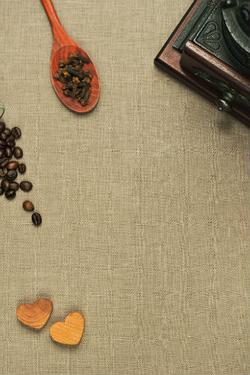There are many different major money making enterprises all around the world. One of these major money making enterprises is the beverage industry that has many competing advertisement messages aimed directly at consumers. Many different beverages can be classified into different marketing categories such as caffeinated and caffeine-free. These beverages include coffees, teas, sodas, and bottled water which have one major ingredient – caffeine or no caffeine.
In the non-caffeine market segment, consumers will notice many terms used to describe the beverages like “decaffeinated,” “naturally decaffeinated,” and “caffeine-free.” As a general rule, beverages should only be considered “caffeine-free” if there has never been any caffeine in the ingredients of the beverage. This rules out all coffee beans and tea leaves because both contain naturally occurring caffeine in their unprocessed form. For coffee and tea lovers who do not want caffeine in their drink, they should pay attention to both natural variations in caffeine content of various teas and coffee (some have more and some have less) as well as the physical decaffeination process used to manufacture a specific coffee or tea product.
The different methods of decaffeination cannot remove all of the caffeine from coffee beans or tea. While it is not considered a law but rather a U.S. standard, a beverage may only be labeled “decaffeinated” if 97% of the caffeine content has been removed. Europe generally follows a higher standard which is closer to 99%, but still not foolproof. Beyond the manufacturers’ control, brewing methods and steeping times drastically affect the level of caffeine that you end up consuming.
Percentages are where thinking about the actual caffeine content of different types of coffee beans, roasts and teas can be useful. For example, Arabica beans normally contain roughly one-half the caffeine of Robusta beans. So whereas a Robusta brew may have 100 mg of caffeine and its decaffeinated equivalent 3 mg, the equal serving of Arabica brew would contain about 50 mg of caffeine and 1.5 mg in the decaf version. Teas also have naturally lower caffeine content than coffee of any variety. Once you read about the industrial methods of extracting caffeine from a coffee bean, you may want to carefully consider the beverage products you choose.
Misleading Information
A web search of “coffee decaffeination” or “decaffeination processes” will produce many conflicting, confusing, uninformed, incorrect, and sometimes purposely misleading results. With so many consumer dollars at stake and the sordid historical origins of chemical decaffeination (more on that later), beverage producers do everything they can to reassure consumers that their beverages are safe and healthy. While there is a kernel of truth in most labels, decaf products labeled “naturally decaffeinated” and “water processed” are particularly misleading. The two methods and four agents of decaffeination help to explain why.
Direct vs. Indirect
Contrary to what you will read, there are both direct and indirect methods of chemical, water, carbon, and liquefied carbon dioxide processing agents. The terms “direct” and “indirect” do not tell the consumer anything about whether or what kinds of solvents, chemicals or regents are used to decaffeinate the product. Direct and indirect processing refers to whether the chemical, water, or carbon dioxide solvent comes into direct contact with the coffee beans. Indirect processing methods steam the beans, collect and condense the steam and then remove the caffeine from the condensed water by either solvents or carbon-based filtering. The beans themselves are not soaked in the solution. After caffeine is separated (by any of the above methods) from the coffee extract, the concentrated liquid containing coffee solids and flavors are soaked back in to the coffee beans. This is why many people claim that decaf has less taste or quality from unadulterated coffee.
Chemical vs. “Natural”
There are currently four types of decaffeination processes: 1) solvent based; 2) charcoal or carbon filtered; 3) “supercritical” carbon dioxide; and 4) triglycerides, a process developed within the last 5 years. All of these processes are performed on green coffee beans before they are roasted.
A point of clarification: you will read a lot about “water-based” processes, but every single method of decaffeination named above uses water in the process. One should therefore not assign any weight to the term “water processed” with one exception, and that exception is the Swiss Water Process that is in fact a specific, patented carbon activated filter method involving water exclusively as the solvent.
Solvent-based decaffeination is the earliest and most controversial way to remove caffeine from coffee or tea. Its inventor first used benzene as the separation agent. As benzene began to be recognized as a health hazard, it was replaced by TCE, another controversial industrial solvent. By the 1970’s and 1980’s, TCE was replaced by the chemical methylene chloride which has many advantages but is still suspected of having some carcinogenic risk. Today most processors use only ethyl acetate as a decaffeination solvent.
Some coffee producers claim ethyl acetate as “all natural” or “naturally decaffeinated” because the chemical compound does occur naturally in many fruits and vegetables. The quantity of chemical required for industrial decaffeination means that synthetically manufactured ethyl acetate is used. So far, no known health risks have been linked to the use of ethyl acetate in direct or indirect decaffeination methods.
Charcoal and carbon filtering processes were developed as a direct challenge to solvent-based methods. Using only water, coffee elements are extracted from the beans, filtered through carbon or charcoal to remove the caffeine, and then the extract is replaced back to the bean. The patented Swiss Water Process is touted as a superior method for preserving flavor, because it throws away the first batch of beans and uses the decaffeinated coffee extract to wash and filter the next batch of beans, and so forth. Basically the difference is they are not using pure water to filter the beans, they are using “flavor charged” water that is already saturated with flavor ingredients so only caffeine moves from the beans to the water. Thus there is no re-soaking or re-infusing removed flavor back into the coffee bean, because the flavor has not been removed.
Supercritical carbon dioxide fluid has both gas-like and liquid-like physical properties. You may have also heard of superheated or liquefied gas. Supercritical fluid fills the container like a gas, but can dissolve substances like a liquid, making it an excellent agent for separating an element such as caffeine from coffee beans. The highly pressurized carbon dioxide is forced through the beans and penetrates deeply, dissolving up to 99% of the caffeine. The carbon dioxide residue evaporates from the coffee beans as they return to room temperature.
The most recently developed method of decaffeination uses triglycerides from spent coffee grounds to extract caffeine from raw coffee beans. The beans are soaked in a hot water solution to draw the caffeine to the surface of the beans. Then they are transferred to another container and immersed in coffee oils that were obtained from spent coffee grounds. The coffee oils contain triglycerides, which when heated for several hours at a high temperature, separate the caffeine but not the flavor from the beans. The beans are next separated from the oils and dried. The caffeine is removed from the oils that are then reused to decaffeinate another batch of beans.
Picking a Decaffeinated or Caffeine-Free Beverage
All of these decaffeination processes adulterate the natural coffee bean in some way because they are extracting elements from the essence of the bean or tea leaf. While some methods claim to be better or safer than others, the processes are similar, and it can be tough for the consumer to discern which actual method is being used. Decaf drinkers should read product packages carefully and possibly contact the manufacturer to ask about which method they use.
Another alternative is to just choose a beverage with low caffeine content naturally. Modify your intake and brewing methods to preserve flavor while lowering your caffeine exposure. One promising development for the future is the discovery of the enzyme that produces caffeine in the coffee plant itself. Scientists have discovered coffee varieties in Ethiopia containing a small fraction of the caffeine of traditional coffee. Further they are working on developing the enzyme into a commercial way to grow bioengineered caffeine-free coffee. In the mean time, enjoy your coffee!

